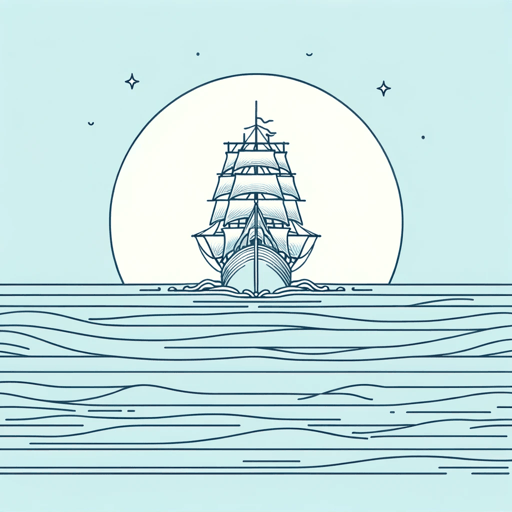18 pages • 36 minutes read
Emily DickinsonWild Nights Wild Nights
Fiction | Poem | Adult | Published in 1891A modern alternative to SparkNotes and CliffsNotes, SuperSummary offers high-quality Study Guides with detailed chapter summaries and analysis of major themes, characters, and more.
Summary and Study Guide
Overview
The American poet Emily Dickinson is the author of the 1861 poem “Wild nights - Wild nights!” Like with most of her poems, it was published after her death. Dickinson organized her work into tiny booklets that were discovered by her family after her passing. Posthumously, Dickinson became one of the most famous Western poets, and critics view her as one of the two originators of American poetry, the other being Walt Whitman. As Dickinson curtailed her social interactions and stayed in her family home in Amherst, Massachusetts, a stereotype developed: She was oppressed and reclusive. Contemporary critics challenge the myth and depict Dickinson as an empowered individual who chose the spiritual realm of literature over the material world.
Despite this spiritual interpretation of her lifestyle, it’s known that she corresponded with many people and had close relationships with her family, including her sister-in-law, Susan Huntingdon Dickinson. Scholars and readers debate whether the relationship between the two was platonic or romantic. Read in a sapphic context, “Wild nights - Wild nights!” turns into an erotic lyric addressed to Susan. As with Dickinson’s other poems, it features jarring dashes and idiosyncratic punctuation. Unlike Dickinson’s other poems, the erotic tone and implicative language may be seen as inappropriate for some readers, but it addresses universal themes like the allure of frenzied feelings, presence versus absence, and the power of close relationships.
Poet Biography
Emily Dickinson was born on December 10, 1830, in Amherst, Massachusetts. A middle child, she had an older brother named Austin and a younger sister named Lavinia, or Vinnie. The Dickinson family was prestigious: Emily’s grandpa helped found Amherst College, and her dad was an esteemed lawyer and politician that served in the United States House of Representatives. Emily’s mom came from a prosperous family of farmers.
Growing up, Dickinson went to school and maintained a vibrant social life. As an adult, Dickinson limited her social interactions and dedicated herself to reading and writing literature. She was fond of the Victorian poet Elizabeth Barrett Browning and the three Brontë sisters, who wrote novels and poems. As for her poems, Dickinson wrote around 1,800, and she didn’t date or title them. Her handwriting isn't easy to decipher, and Dickinson scholars and readers continually scrutinize the original manuscripts, accessible through the Emily Dickinson Archive.
Though dedicated to literature, Dickinson wasn’t isolated. She maintained links to the material world around her. She fostered a deep relationship with her sister-in-law and Austin’s wife, Susan Huntington Dickinson, and she corresponded with prominent figures, including the writer, abolitionist, and feminist Thomas Wentworth Higginson.
Dickinson died from nephritis on May 15, 1886. After her death, Vinnie discovered her poems, and Mabel Todd Loomis, an artist who had an affair with Austin, published a selection. To make the poems accessible, Loomis standardized the punctuation and capitalization. Later editors, like Thomas Johnson and R. W. Franklin, produced faithful editions, numbering the poems based on their estimates of when Dickinson wrote them. Johnson numbers “Wild nights - Wild nights!” 249, while Franklin numbers it 269.
Poem text
Wild nights - Wild nights!
Were I with thee
Wild nights should be
Our luxury!
Futile - the winds -
To a Heart in port -
Done with the Compass -
Done with the Chart!
Rowing in Eden -
Ah - the Sea!
Might I but moor - tonight -
In thee!
Dickinson, Emily. “Wild nights - Wild nights!” 1861. Poetry Foundation.
Summary
“Wild nights - Wild nights!” features a speaker communicating with a specific addressee, and the speaker celebrates the extravagant fun they’d have if they were with “thee” (Line 2)—the unnamed person the poem addresses. If the speaker was with the person, the blissful time would turn into their riches—their “luxury” (Line 4).
If the speaker and the person were together, nothing could stop them. The speaker compares their hypothetical union to a sea and a boat or ship. The addressee represents the sea, the speaker is the boat or ship, and the “winds” (Line 5) couldn’t break their bond, with the speaker’s “Heart” firmly ensconced in the addressee or “port” (Line 6).
Together, the pair wouldn’t need a “Compass” or a “Chart” (Lines 7-8). They wouldn’t require external directions or guidance: The speaker and the addressee would have each other. Being with the addressee makes the speaker feel like they’re in a paradisiacal place: “Eden” (Line 9). At the same time, the speaker still thinks of the addressee as a “Sea” (Line 10) and wishes they could “moor” (Line 10) or link themselves to the person and become a single entity.
Related Titles
By Emily Dickinson

A Bird, came down the Walk
Emily Dickinson

A Clock stopped—
Emily Dickinson

A narrow Fellow in the Grass (1096)
Emily Dickinson

Because I Could Not Stop for Death
Emily Dickinson

"Faith" is a fine invention
Emily Dickinson

Fame Is a Fickle Food (1702)
Emily Dickinson

Hope is a strange invention
Emily Dickinson

"Hope" Is the Thing with Feathers
Emily Dickinson

I Can Wade Grief
Emily Dickinson

I Felt a Cleaving in my Mind
Emily Dickinson

I Felt a Funeral, in My Brain
Emily Dickinson

If I Can Stop One Heart from Breaking
Emily Dickinson

If I should die
Emily Dickinson

If you were coming in the fall
Emily Dickinson

I heard a Fly buzz — when I died
Emily Dickinson

I'm Nobody! Who Are You?
Emily Dickinson

Much Madness is divinest Sense—
Emily Dickinson

Success Is Counted Sweetest
Emily Dickinson

Tell all the truth but tell it slant
Emily Dickinson

The Only News I Know
Emily Dickinson

